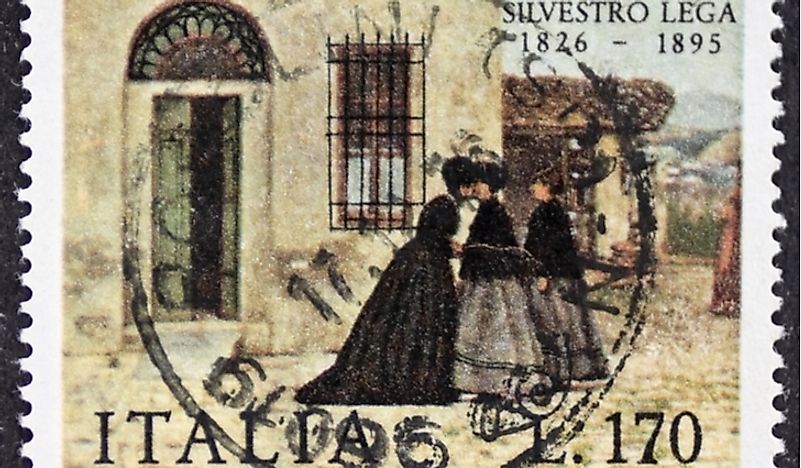The Macchiaioli Movement in Italy

In the 19th Century, Italy was characterized by the emergence of several art movements that would prove to be significantly influential in the political, cultural, and social spheres of greater Italian society. One such movement was the Macchiaioli movement which emerged during the 1850s. The group became one of the most criticized art group that never outlived its criticisms. Macchiaioli were mainly interested in the portrayal of rural and contemporary life through the use of shadows and light effects. Most of the works by the group were never meant for exhibition, and not many are housed in modern galleries.
5. Overview of the Style
Macchiaioli is derived from an Italian word meaning patches. The word was used to mock the Macchiaioli group and their style of art. The style is closely similar to French impressionism in that the painters used patches of color, and explored the effect of light and shadows to portray first impressions of elements of nature. Like their French counterparts, Macchiaioli painted outdoors especially when capturing light and shadow effects on the natural environment then developed the paintings in studios. The style was criticized for producing sketchy work that always appeared incomplete.
4. History and Development
While Impressionism art was closely related to Macchiaioli, the latter was developed around a decade earlier. Macchiaioli was established by a group of revolutionary artists who felt restricted by the academy of fine arts and wanted to reinvigorate Italian art from abstract literature based concepts to a portrayal of the real life of the time. The group drew inspiration from artists such as Rembrandt, Tintoretto, Caravaggio, and the French Barbizon School. Their works were displayed in the First Exhibition of Italy in 1861 which made the popular for its depiction of contemporary life and patriotism. However, severe criticism and little commercial success led to the decline of the movement.
3. Notable Artists and their Works
Notable Macchiaioli painters included Giuseppe Abbati, Cristiano Banti, Odoardo Borrani, Vincenzo Cabianca, Adriano Cecioni, Telemaco Signorini, Raffallo Sernesi, Giovanni Fattori, Serafino de Tivoli, and Vito D’Ancona. Some of the movement's most notable works included the Tower of the Pelazzo del Podesta, Lady in White, Prince Amadeo Wounded at Custoza, Girl of Crespina, Ghetto of Florence, Cowboys of the Maremma Driving Herds, and On a Hill in Settignano.
2. Decline and Successive Movements
Macchiaioli was established by a group of artists forming a body unified by their desire to transform Italian art, as well as their desires for political reforms in Italy. The group lasted for a short period of time due to criticism as well as the abandonment of the style of art for the old academic style or to pursue other artistic interests. Their different responses to scientific and technological advancement also contributed to the decline of the movement. The movement played a key influence on later movements such as the French Impressionists and Futurists, not only in art, but also in their expressions of class struggles and national weakness.
1. Legacy
Macchiaioli was most important in the transition of art and politics through the themes of its paintings. Since most of the members had participated in the first independence war of Italy in 1848, their artwork was instrumental in the Risorgimento movement. Some of the leading painters of the movement such as Giovanni Fattori worked as private tutors, and some of his students adopted other artistic styles such as Neo-Impressionism.











